In recent years, the Cinque Terre have been transformed from charming fishing villages into one of Italy's most visited tourist destinations. With their spectacular landscapes and vivid colours, they have captivated millions of travellers from all over the world. But their growing success also has a downside: constant crowding, high prices, pressurised infrastructure and a progressive loss of authenticity. If you are looking for a new experience in places that are less well known but just as beautiful, you will find some great alternatives here.
In this article, in fact, we offer you different holiday solutions: five lesser-known but equally fascinating Italian coastal villages. From Tellaro to Maratea, via Camogli, Atrani and the surprising Civita di Mare in Calabria, we will guide you through places where time seems to slow down, nature dominates and the welcome still has the genuine flavour of small communities. A journey into the discreet beauty of the real Italy.

Cinque Terre: an overcrowded dream? We discover five alternative and (almost) secret villages
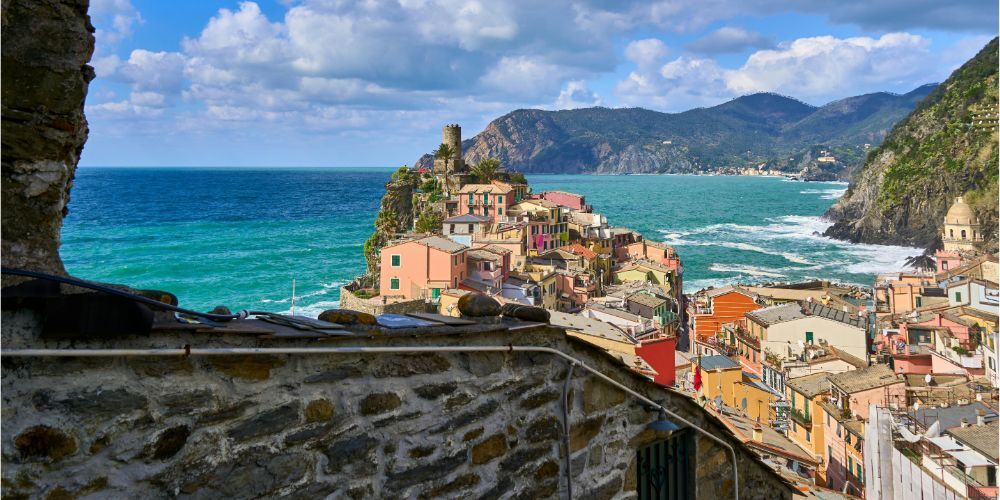
The Cinque Terre continues to captivate millions of tourists each year with its spectacular landscapes, colorful villages overlooking the sea, and breathtaking walks among vineyards and cliffs. Yet more and more travelers are questioning the real value of this experience: is it still the unspoiled paradise of a few years ago or has it become an inflated dream?
In recent years, the number of visitors has grown at an exponential rate, to more than 3 million annually, according to data from the Cinque Terre National Park. This crowding has transformed the atmosphere of the villages, which now face mass tourism that is not always compatible with their fragile structure. It is not uncommon, especially in the summer months, to find overcrowded trains, congested footpaths, restaurants with long waits and prices that have little to envy those of art cities such as Florence or Venice. Even the authenticity of daily life, the kind that once made these villages so charming, now seems tarnished by a tourist presence so intense that it bends commercial activities to the logic of hit-and-run.
While the Cinque Terre always represent a place of inestimable beauty, with breathtaking scenery, if you are looking for the Italy of villages, the one made up of silences, fishermen at the harbour, old ladies looking out from their balconies and sunsets that seem like a secret shared with few, there is good news: you can still find refuge in other locations. Villages that have a lot in common with the Cinque Terre-natural beauty, history, traditions, and an intimate dimension-but that have remained more authentic, less traveled, and more accessible even economically.
In this article we will introduce you to five villages to visit where you can rediscover a slow, more peaceful life, far from the abundant chaos of mainstream tourist places.
Listen to the podcast version of the article with Monna Lisa and Leonardo's voices
5. Tellaro: the silent jewel of Liguria
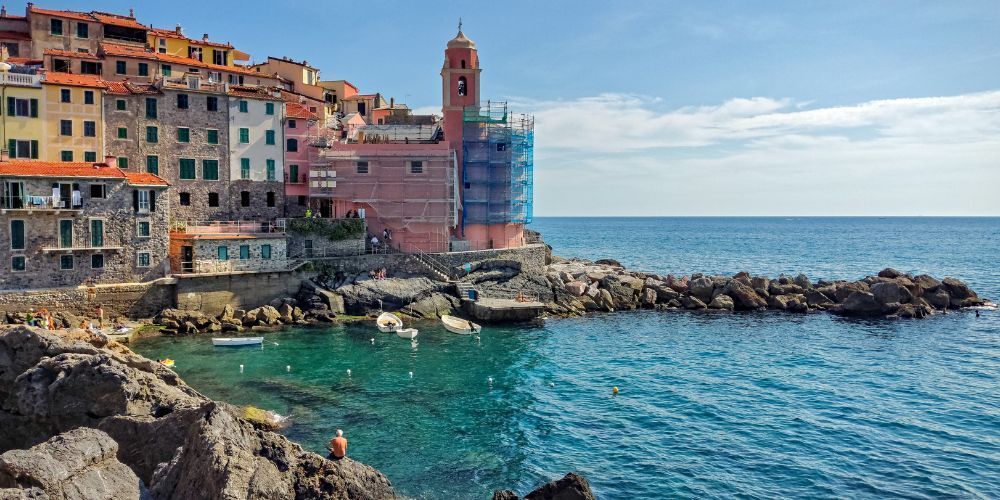
The first village we propose remains in Liguria. If your idea of a vacation is all about the sea and you had thought of a destination in this Region, here is an excellent alternative.
Overlooking the Gulf of Poets, Tellaro is a tiny seaside village that seems suspended between the sky and the sea. It is part of the municipality of Lerici, and has been included among the “Most Beautiful Villages in Italy,” and not by chance. Strolling through its stone caruggi (alleys), one feels a rare sense of peace: the houses huddle together as if to protect themselves from the sea storms, and every corner offers a surprising glimpse. Time passes slowly here.
The days begin with the smell of the famous freshly baked focaccia and end with the orange light bathing the Church of San Giorgio, whose facade looks fearlessly out to sea. During the summer, the village comes alive with small local events, such as the traditional “Octopus Festival,” but always remains true to its collected and poetic nature. This festival usually takes place in the second week of August and you will be able to taste octopus in two different ways. Either “alla tellarese,” that is, boiled and accompanied with potatoes and seasoned with Tellaro oil, with olives, garlic and parsley, salt, pepper and lemon juice, or “all'inferno,” that is, stewed with bay leaves, marjoram, chili pepper, tomato and a splash of white wine. All accompanied by gnocchetti with seafood, risotto with clams, stuffed muscles, focaccia alla tellarese, local wines and excellent sangria.
4. Atrani: the little hidden treasure of the Amalfi Coast
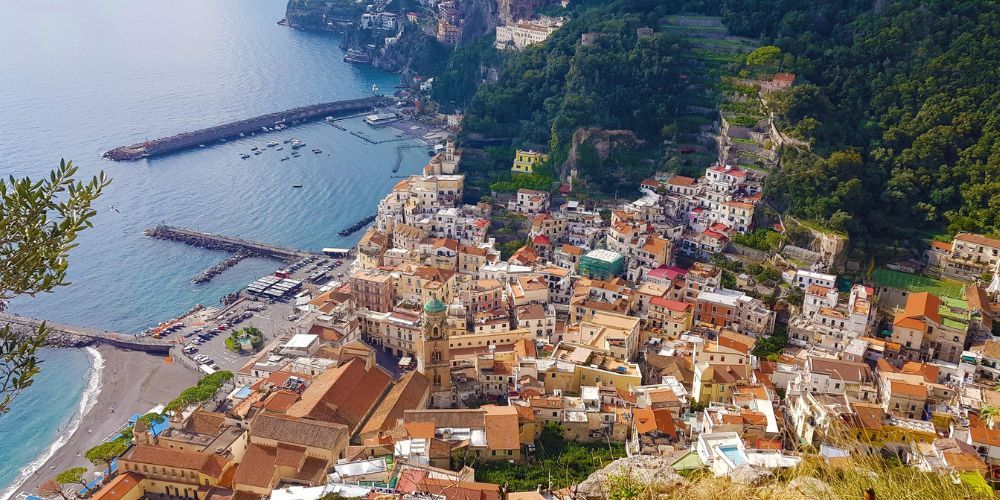
Tucked away in the folds of the Amalfi Coast, Atrani is one of the smallest villages in Italy by size, but also one of the most charming.
Just beyond Amalfi, you'll find yourself immersed in an intact microcosm, made up of small alleys carved into the rock, arches connecting the houses, and stairs descending to a secluded and quiet beach. Atrani preserves the authentic face of the Coast: here people still live according to the customs of the past, and arriving tourists are greeted with discretion and warmth. The small central square, with its simple bars and the smell of lemons everywhere, is the beating heart of the village.
A must-see is the Church of San Salvatore de' Birecto, where in medieval times the doges of Amalfi were crowned. Atrani is ideal if you want to savor the slow life of the south, lulled by the sounds of the sea and the warm light of its days.
3. Camogli: colours and traditions on the Riviera di Levante
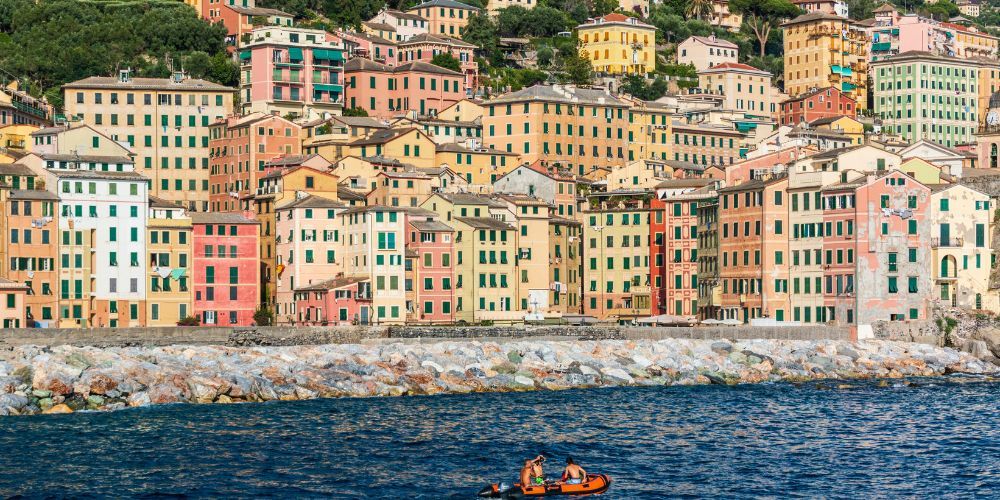
Also in Liguria, a few kilometers away from Genoa, you find Camogli. A village that looks like a painter's palette: the multicolored facades of its historic houses are reflected in the waters of the small port, creating an almost theatrical atmosphere.
Camogli is a lively village, but without ever being intrusive. Its rhythms are dictated by the fishing boats that return in the morning, the craft markets along the pier, and the trofie al pesto lunches served in small restaurants that smell of basil and sea. There is no shortage of historical attractions, such as the Dragonara Castle and the Basilica of Santa Maria Assunta. But the real treasure is the Portofino Nature Park, which embraces the village with breathtaking trails and pristine coves. With its 80-kilometer network of trails you will have the opportunity to create endless itineraries. If you are with your family we recommend “the Animal Trail.”
Camogli is perfect if you are looking for the right balance between tradition, nature and culture, with a strong identity and a beauty that reveals itself without forcing.
2. Maratea: the Lucanian pearl between sea and mountains
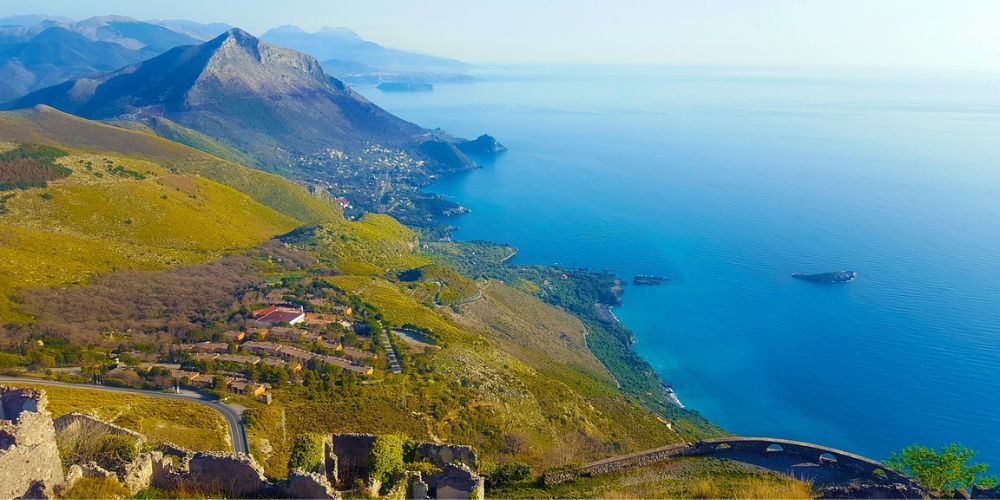
Maratea is a rare case: a resort that combines the mountain soul with the energy of the sea. This village located in Basilicata, overlooks a still wild stretch of coastline, far from the beaten tourist track.
The historic village climbs a hill 300 meters above sea level, with cobblestone streets, aristocratic palaces and more than forty churches, which have earned it the nickname “the city of 44 churches.” But the real icon of Maratea is the statue of Christ the Redeemer, 22 meters high and second in Europe only to the one in Lisbon, which dominates the entire coastline giving a breathtaking view. You can reach the beaches by car or on foot; they are small coves of dark pebbles, often framed by wild green rock walls.
In addition to spirituality and history, Maratea, the Pearl of the tyrrhenian sea is also a lively artistic and cultural center. In the summer months, the village usually hosts a series of events, open-air concerts, theater reviews, and the “Marateale” - Premio Internazionale Basilicata, a film festival that has featured Italian and international actors and directors over the years. The 2024 edition was held in July, and the event is expected to be repeated in 2025, as per tradition.
Maratea is therefore the perfect choice if you are looking for nature, history and spirituality in one place, where tourism is still respectful of local identity.
You can also take advantage of the Tour in English, Spanish and German to discover Maratea on foot.
Discover the Walking Tour1. Discover secret Calabria: sea, history and silence in Belvedere Marittimo
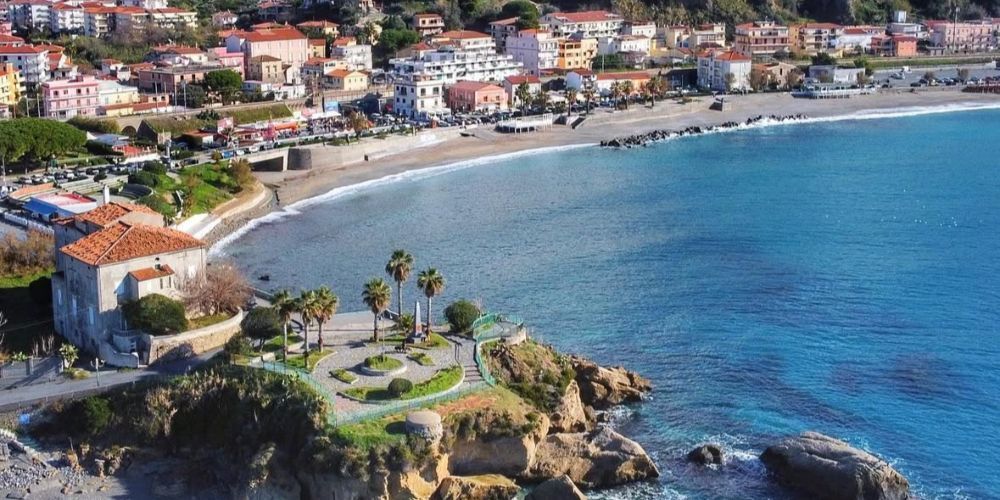
In the heart of the Riviera dei Cedri, along the Tyrrhenian stretch of northern Calabria, lies Belvedere Marittimo, a resort still little traveled by large-scale international tourism, but capable of offering an authentic and surprising experience. The town is divided into two souls: the historic center perched on a hill, rich in medieval remains, and the marine part, which stretches along a coast dotted with coves, cliffs and sandy beaches.
The historic center retains an unspoiled charm, with cobbled streets, stone arches and glimpses that open onto the sea. The Aragonese Castle, symbol of the town, dominates from above with its towers and fortified walls. Dating back to the 9th century and then remodeled during the Angevin and Aragonese eras, it now hosts exhibitions, cultural events and traditional events. At its foot is the Church of the Rosary, with a Baroque portal and 18th-century frescoes.
The coastal area, often called simply “Marina di Belvedere,” is ideal if you are looking for slow tourism, where the beaches are not besieged by summer chaos. The clear sand, clear sea and rocky seabed attract snorkeling and diving enthusiasts. Some beaches, such as Cicirella, are almost always uncrowded, even in August.
During the summer, the municipality of Belvedere Marittimo organizes a calendar of events ranging from music to gastronomy, with festivals, concerts in the square, and outdoor performances. In 2024, for example, the summer festival “Summer in Belvedere” was held, with weekly cultural events: it is likely to be repeated in 2025.
Belvedere Marittimo represents one of the last authentic frontiers of Calabrian tourism: welcoming, simple, sincere. Perfect if you seek contact with nature, the tranquility of the southern sea, and the warm hospitality of small local communities.
About the author
Written on 20/05/2025

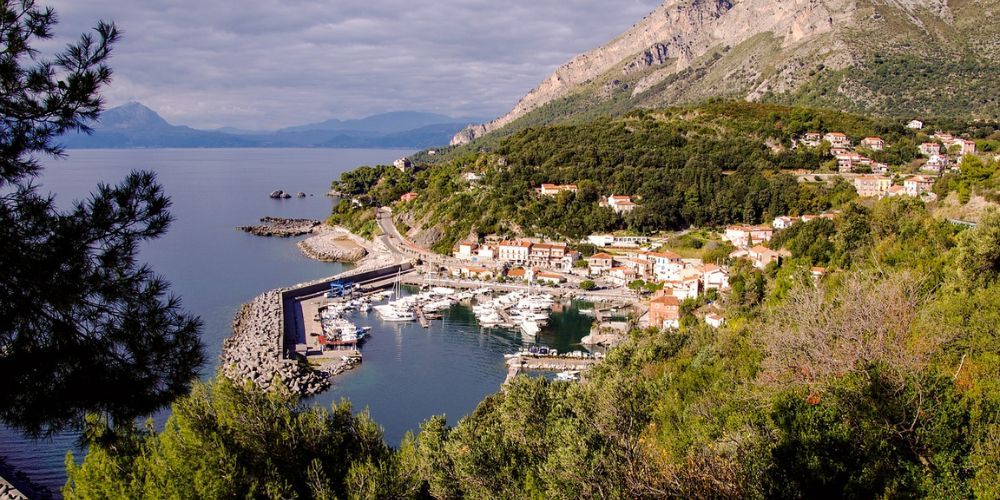

Lorenzo Braccini
Tired of the crowded Cinque Terre? Discover 5 authentic and lesser-known coastal villages where you can experience the real Italy.